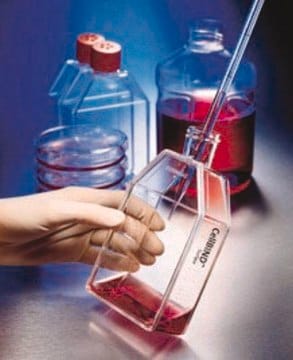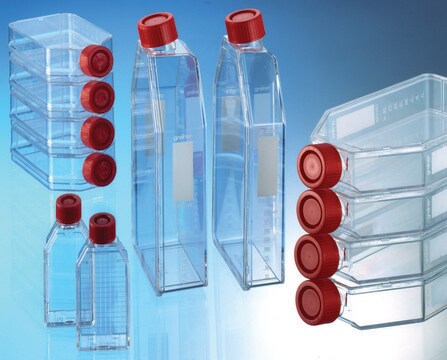CLS430639
Corning® cell culture flasks
surface area 25 cm2, canted neck, cap (vented)
Synonym(s):
culture flask, flask cell culture, tissue culture flask
About This Item
Recommended Products
material
canted neck
cap (vented)
polystyrene
rectangular bottom flask
rectangular flask
vent cap
sterility
sterile
feature
cap
graduations
packaging
case of 200
manufacturer/tradename
Corning 430639
maximum volume
60 mL
surface area
25 cm2
working volume
5-7.5 mL
binding type
Tissue Culture (TC)-treated surface
Looking for similar products? Visit Product Comparison Guide
General description
- Manufactured from optically clear virgin polystyrene
- Treated for optimal cell attachment
- Printed with lot numbers for ease in traceability
- 100% integrity tested
- Sterilized by gamma irradiation and certified nonpyrogenic
Features and Benefits
- The neck style is canted, and the cap style is vented.
- 25cm² available growth area
- Contains a ramp from the bottom to the canted neck for easier pouring and pipet access.
Legal Information
Certificates of Analysis (COA)
Search for Certificates of Analysis (COA) by entering the products Lot/Batch Number. Lot and Batch Numbers can be found on a product’s label following the words ‘Lot’ or ‘Batch’.
Already Own This Product?
Find documentation for the products that you have recently purchased in the Document Library.
Our team of scientists has experience in all areas of research including Life Science, Material Science, Chemical Synthesis, Chromatography, Analytical and many others.
Contact Technical Service



